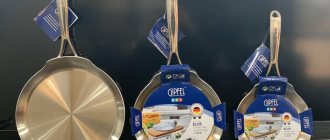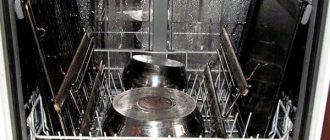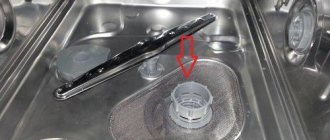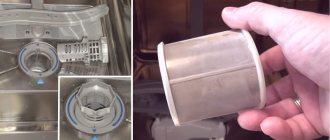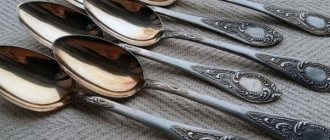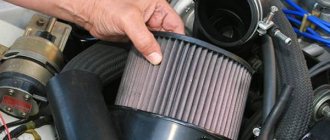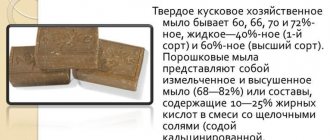There is a wide variety of utensils in a modern kitchen. And you will see everything here: ceramic and Teflon frying pans, silicone molds of bizarre configurations, glass and metal, transparent and black. And, if everything is clear with a cast-iron frying pan or an enamel saucepan, familiar from childhood, then questions often arise with another one. Will this cap be useful for baking a pie or something else?
In addition to the traditional burner, today we cook food in the oven, microwave, and convection oven. And the burners have now become different. So the question arises: is it possible to use the same saucepan or cup everywhere? Which one can you pour boiling water into, and which one only takes cold water? What is useful for cooking, and what is only for heating?
You don't have to go far to find answers to these questions. This is precisely why cookware labels exist. In addition to the well-known fork with a glass, which means that a particular product belongs to a food container, there are many others. Have a table like this and, if necessary, just find the icon you need.
Other characteristics
“Glass-fork” is the most important icon that indicates the suitability of plastic utensils for food. If this symbol is crossed out or completely absent from the plastic, then such products are not intended for food.
Dishwasher safe.
Washing in the dishwasher is not acceptable.
Tolerates temperature changes.
Allowed to be stored in the refrigerator.
Allowed to be stored in the freezer.
This designation indicates that the products comply with the required instructions (pressure cookers, electronics).
Lightweight material, compact for storage.
A measuring scale is drawn on the walls of the dishes.
Shock resistant. Cracks and damage are impossible. Impact resistance is 2 times higher and scratch resistance is 3 times higher in comparison with products made from porcelain, earthenware and ceramics. True protection when transporting goods - there is no risk of broken dishes.
Teflon - non-stick coating.
Natural material is harmless to health. 100% hygienic due to the absence of pores. Does not contain odor, because... bacterial growth is not possible. 100% natural material, recyclable.
Disposable tableware materials
A triangle with three arrows is a sign of recycling of raw materials, indicating a closed cycle: production - consumption - disposal. That is, dishes with this sign are suitable for further processing. The numbers inside the triangle indicate the type of recycled material: 1-19 - plastic, 20-39 - cardboard and paper, 40-49 - metal, 50-59 - wood, 60-69 - fabric and textile, 70-79 - glass.
PET (PETE) - polyethylene terephthalate. It is used in the manufacture of packaging (boxes, bottles, cans, etc.) intended for bottling water, drinks, juices. This material is also used in packaging of various powders, bulk food products, etc.
HDPE (HDPE) - polyethylene with low pressure and high density. Used in the production of toys and products that come into contact with food. Considered safe for food consumption.
PVC (PVC) - polyvinyl chloride. Used for garden furniture, pipes, floor coverings, detergent bottles, oilcloth, window profiles, blinds. This material is potentially hazardous for food use, as it contains dioxins, mercury, bisphenol A, and cadmium.
LDPE (LDPE) - polyethylene with high pressure and low density. It is used in the production of flexible plastic packaging, plastic bags and products that are used in the packaging of medicines.
PP - polypropylene. It is used in the manufacture of toys, the automotive industry, and in the food industry for the production of packaging. The material can withstand high temperatures, as a result of which the dishes can be used for hot foods. Contact with alcohol is undesirable, but possible.
Decoding markers
The most common symbol on plastic utensils is a triangle in the shape of three arrows. Near or below these arrows there are inscriptions or numbers indicating a specific marker. Ignorance of what these arrows or inscriptions mean leads to the fact that users purchase goods containing food products that are in containers made of non-food grade plastic. Although not all of the plastics described below are recommended for use in food storage, seven different labels may be found on food packaging. Their classification is presented in the table below.
| Icon inside a triangle | What does the inscription mean? |
| 5 | Safe. Used for the production of reusable food containers. Together with plastic number two, they are considered the most approved. Near the icon there is the inscription PP (PP) |
| 2 | Safe. Cleared for reuse. Has high density. Near the icon there is the inscription HDPE (LDPE) |
| 1 | Cheap material. Used in the production of mineral water containers. When reused, this material releases toxic substances. Near the icon is the inscription PET (PET) |
| 4 | Considered to be approved plastic. Can be reused. Used for the manufacture of packaging materials and bags. Near the icon there is the inscription LDPE (HDPE) |
| 3 | When burned, it releases very dangerous substances. Capable of releasing toxins and chemical compounds, especially when heated. Near the icon is the inscription PCV (PVC) |
| 6 | In addition to food containers, foam is made from this plastic. Caps for disposable cups are made from it. Next to the icon is the inscription PS (PS) |
| 7 | The most unsafe group. It includes all types of plastic that are not included in the previous six groups. Some of them may even be toxic and poisonous. Plastics of this group could not be classified into any of the above, which means they are the most dangerous. Their dangerous properties increase when in contact with hot water, food or when heated. Near the icon there is the inscription OTHER |
As the information described above shows, the most approved types of plastic are those that have numbers two and five. All types of plastic containers marked with number 7 are strictly not recommended. The harmful substances released can be harmful to health.
Why are dishes labeled?
The markings on the cookware indicate how functional the cookware is. Remember your grandmothers. As a rule, they had few dishes. One or two cast iron frying pans, clay pots, and everything was cooked in one oven.
Modern kitchens are equipped with ovens, stoves, and microwave ovens. Each model has its own temperature regime and cooking method. The cookware is also different - grill, non-stick, with induction support. All this requires a lot of attention when choosing. After all, ignorance can cause harm to yourself and the equipment.
Non-stick coating, for example, requires special care. It cannot be scratched or cleaned with powders.
This is due to the fact that the damaged surface will release substances that can harm health.
And for induction cookers, pots and pans are suitable that have a special alloy of material that forms a magnetic layer. Due to this magnetic layer, food is cooked.
When choosing dishes, the icons depicted on the surface can be misleading. To avoid troubles when cooking, you need to know what the icon means.
Thus, the marking of the cookware can tell you which stove the cookware is suitable for. After all, there are now so many types of cookers – glass ceramics, induction cookers, electric and gas. And there are ten times more materials for dishes.
Various metals and their alloys are used to make pans.
Marking is a guarantee of safety . If you choose low-quality cookware or use it for other purposes, you can get unpleasant consequences, for example, health problems. Also, an incorrectly selected pot or frying pan can cause irreparable damage to the stove and oven. Repairing equipment will not be easy, and it will also be financially expensive.
What can be washed in PMM under certain conditions
There is a group of cutlery that can be washed in the dishwasher at a certain temperature by choosing the right product and location. For example: Cupronickel is an alloy from which exquisite spoons and forks are made, reminiscent of silverware.
Cupronickel silver devices cannot be placed in a chamber with other metal objects, as this will cause them to oxidize and darken. If there are decorative elements made of other materials on the handles, it is better to wash the set by hand. Also carefully read the instructions for the detergent to see if it is compatible with cupronickel.
Porcelain is a delicate, delicate and expensive material. Manufacturers of Japanese and Chinese porcelain do not recommend machine washing, but experienced housewives have come up with a safe way to wash tableware in a PMM:
- Choose a temperature regime no higher than 55 degrees - high temperatures have a bad effect on porcelain.
- Do not use aggressive detergents.
- Use only the top of the basket for loading.
- Cups, saucers and other elements should not touch each other.
- Do not wash porcelain at the same time as other materials.
- Porcelain with gilding and glaze has no place in PMM.
By following these points, you can easily get a clean and intact set.
- Thermos. Dishwashing detergents, hot water, strong pressure can ruin a thermos, damaging the flask. Therefore, if you choose a low-temperature cycle, a delicate, liquid product, you can successfully wash a thermos or thermal mug.
- Toys for children. Many mothers use a dishwasher to wash and disinfect children's toys. You can wash toys made of durable, high-quality plastic, without small, detachable parts, rubber, silicone. It is not advisable to wash dolls with artificial hair - the hairstyle cannot be saved after such a “shower”.
- Zepter brand.
“Zepter” cookware is a popular, high-quality cookware equipped with high technology. Made from durable alloys and heat-resistant glass that can withstand dishwashing. But some technical elements (for example, a thermal controller on the lid) may be damaged during washing. Therefore, before loading into the hopper, such parts must be unscrewed.
Teflon frying pans, saucepans, saucepans. If we are talking about the original Teflon brand, then the manufacturer gives the go-ahead for automated care of Teflon products. But quite often sellers call any non-stick coating Teflon. Therefore, before loading dishes, read the instructions, look for permitting or prohibiting markings. If there is a “washable” icon, feel free to load the devices and start the cycle. The symbols on the dishes will help you determine the correct use, care, and storage.
- Knives. If the dishwasher is equipped with a special compartment for knives, they can be washed without problems. Otherwise, the sharp blades damage the metal of the grille, become dull, and the wooden handles deteriorate.
- Baking trays - can be washed in the lower compartment, if it is suitable in size, you must first remove burnt-on food debris and grease so that the pumps do not become clogged.
- Cast iron, cast iron grates. Cast iron products deteriorate from aggressive detergents, high temperatures, and prolonged exposure to water. Subject cast iron to this test as a last resort, choosing the shortest mode, low water temperature, without detergent. This also applies to grill grates, unless they are made of aluminum. Aluminum deteriorates in the machine.
- Filter jug. Jugs “Barrier”, “Aquaphor”, etc. can be washed in a PMM at a temperature of no more than 40 degrees.
- Hood filter. The choice of cleaning method depends on the material from which the hood mesh is made. If it is aluminum or an aluminum alloy, choose manual care, otherwise the filter will turn black and become deformed.
- Refrigerator shelves. Shelves made of thick plastic can be refreshed at low temperatures, without abrasive detergents - otherwise the material will be scratched.
- Plastic containers - if there is a sign allowing this method.
Designations for cooking methods
The variety of types of stoves has led to the fact that not every frying pan or saucepan is suitable for use on it.
It is worth remembering that properly selected dishes are the key to tasty and healthy food.
Now it’s worth figuring out what kind of markers there are, depending on the method of cooking.
- An icon with a drawing of an oven, with the inscription electric. This symbol indicates that the cookware can be used in an electric oven. For example, such dishes are not suitable for an oven that runs on gas.
- Marking with a picture of an oven. This icon is applied to dishes that can be used in any type of oven. Accordingly, if such an icon is crossed out, then use in the oven is not permitted.
- Drawing of an oven with lights . This icon indicates that you can cook in a gas oven.
- Image of an oven with a number . This icon is used in the oven, but only up to a certain temperature. The maximum temperature you can adhere to is indicated on the icon.
- There is a flame drawn in the square . Such icons are indicated on cookware that is suitable for gas stoves.
- Marking with the letters microwave or waves. The meaning of this symbol indicates that the cookware is suitable for the microwave oven. If the icon is crossed out, it cannot be used in a microwave oven.
- A circle in the shape of a spiral. This mark on the surface of pots and pans indicates that they can be used on an electric stove.
- A circle with a dot in the center. Sets with this marking are suitable for cooking on glass-ceramic stoves and hobs.
- Four vertical “loops” and the word induction . And this designation indicates the possibility of use on an induction cooker. The principle of induction is that surfaces during an electrical discharge form a magnetic field. This field heats up and the cooking process happens much faster.
These simple but very important signs can be on your dishes.
It is worth remembering that choosing cookware according to your stove will make your dishes tasty, and the cooking time will be reduced significantly.
Plastic classification
Food-grade plastic is one of the types of plastic recognized as conditionally acceptable for contact with food. It is designed for storing or consuming food and has features to slow down, partially remove or minimize the release of toxic substances. This type of plastic is commonly called food grade plastic. It has its own marking.
You can find out that this plastic is food-grade by the corresponding marking - all items have a certain logo. All signs on plastic utensils have an explanation, but it is not the numbers that will help you determine that the plastic is food grade, but the icons themselves on the utensils. This icon takes the form of a graphic symbol in the shape of 3 arrows that together form a triangle. Inside each triangle there is a certain number (from one to seven), below there are inscriptions. You should look for this inscription and icon at the bottom of the plastic packaging. If the product does not have such a designation, it is prohibited to use this product for food products.
Signs indicating operating rules
Cooking rules are important, but it is equally important to know how to care for your cookware. This will help preserve its original appearance and quality of the material. For this, there are a number of markings that should also be studied.
- There are dishes drawn in the square. This icon says that it can be washed in a dishwasher, because this unit has long been installed in every second apartment. If the icon has a red diagonal stripe, then washing in the dishwasher is strictly prohibited.
Symbols on disposable tableware
Disposable tableware is popular among consumers. But not everyone thinks about what markings on surfaces mean. But she can tell a lot.
Almost all disposable tableware is made of plastic. The only difference is what quality it is.
This type of cookware has many advantages:
- setting a table for a large number of guests is easy and much cheaper than using standard earthenware or ceramics;
- does not break, you can take it with you on the road, on vacation, in nature;
- Such dishes are very popular at children's parties; the risk of beating and wounds is eliminated;
- no need to wash after use - you can just throw it away and not worry.
Disposable tableware must have a logo that looks like a triangle with three arrows. These three arrows indicate that production uses a recycling system. That is, the process is closed: production - use - processing - production.
This is economically and environmentally beneficial. Environmental pollution will be reduced to a minimum over time.
A number from 1 to 7 is written inside. There may also be an inscription under the icon. Below are the meanings of the numbers.
- The presence of this figure means that the material is very cheap. Most often used for the production of containers for mineral water. Reuse can be dangerous as the plastic begins to release toxic substances. There may also additionally be the inscription PET. Remember that you should not use bottled water containers, it is dangerous.
- Safe plastic that is recyclable. Under the icon is the inscription HDPE (LDPE). This plastic is used to make food containers that are now found in every home. It’s convenient to store food in them and take it with you to work.
- This plastic should not be exposed to heat or combustion. When heated, dangerous toxins are released. Supplemented with the inscription PCV (PVC). But you can still store food. The only condition is the interaction time.
- This plastic is used for packaging materials and bags. Can be reused without worry. Has the inscription LDPE (HDPE). May be of different densities.
- Safe plastic that can be reused. Most often used for the production of food containers. It is equivalent to plastic number 2. The inscription under the PP (PP) icon. This is easy to remember, because the letters PP also indicate proper nutrition.
- This plastic is used not only for the production of food containers and containers, but also acts as a derivative in the production of foam plastic. Has the inscription PS (PS).
- The most dangerous group of plastics and its derivatives. The substances and toxins that can come from this plastic are dangerous and poisonous. This material becomes most toxic when heated or in contact with hot water. The inscription under the OTHER logo. It is better not to use such materials for food products at all.
In the article we looked at what markings you might encounter when choosing cookware. The important point here is what you will be using the cookware for.
Remember all the symbols. This way you will keep both yourself and your loved ones healthy.
Particular attention should be paid to choosing dishes for children. After all, the child’s body does not yet have sufficient protective functions and is most vulnerable to environmental influences. All plastic is designed to be recyclable.
Pros and cons of plastic products
Food grade plastic has gained great popularity in recent years. Many people appreciated these products when going on picnics or using disposable tableware on special occasions. Plastic utensils have certain advantages:
- If you need to set a table for a large number of guests, buying disposable products is much cheaper than reusable ones.
- These containers are very light, so they can be transported and do not break during transportation.
- Can be used at banquets with children without fear of broken glassware.
And although these products have many advantages, they have certain disadvantages. Among them:
- Impossibility of reusable use.
- High price of the product.
- Some products emit harmful substances, especially if used inappropriately.
Not everyone knows, but disposable tableware has its own signs and symbols. The marking on plastic utensils indicates not only the material of manufacture, but also the purposes for which the item can be used. It is not recommended to ignore these signs, as they protect human health and life.
It is not recommended to use containers that are not marked. Most likely this means that they do not meet the requirements of GOST. It is possible that non-food grade plastic was used in the production of these containers.
Labeling of cooking methods
| The cookware is suitable for cooking on a gas stove. |
| This cookware can be used to cook on a glass ceramic hob. |
| The cookware is designed for induction cookers. |
| If you have an electric stove, this product is suitable for you. |
| The cookware is suitable for cooking on a halogen stove. |
| This product can be placed in the oven. |
| The cookware is suitable for use in a microwave oven. |
Marking the rules for using cookware
Pictograms that indicate how to properly wash and store dishes, and also reveal information about the additional properties of the products.
| The dishes can be processed in the dishwasher. |
| The dishes can withstand temperature changes. |
| It is acceptable to store dishes in the freezer (sometimes the maximum freezing temperature is indicated on the icon). |
| Impact-resistant glasses, goblets and wine glasses. |
| Impact resistant plates, dishes and bowls. |
| Non-stick (Teflon) coating. |
| Natural, hygienic material that does not harm health and is recyclable. |
| The product complies with European standards and is safe for the user and the environment. |
Video
join the discussion
Share with your friends
When buying a frying pan or other utensils, you may see marks printed on its surface. These hieroglyphs, incomprehensible at first glance, indicate how and for what this dish can be used. Read about the subtleties and meanings in the article.


